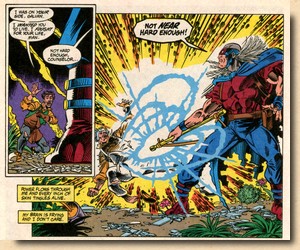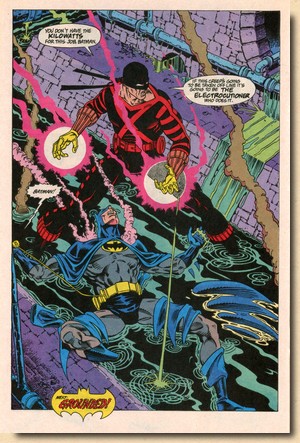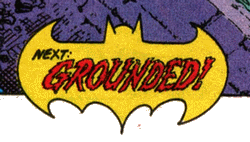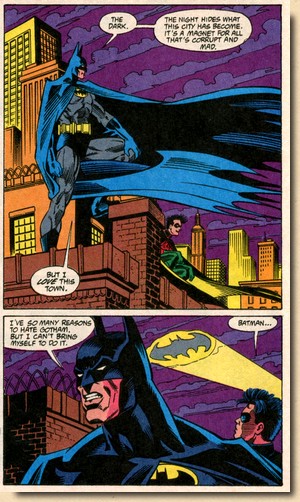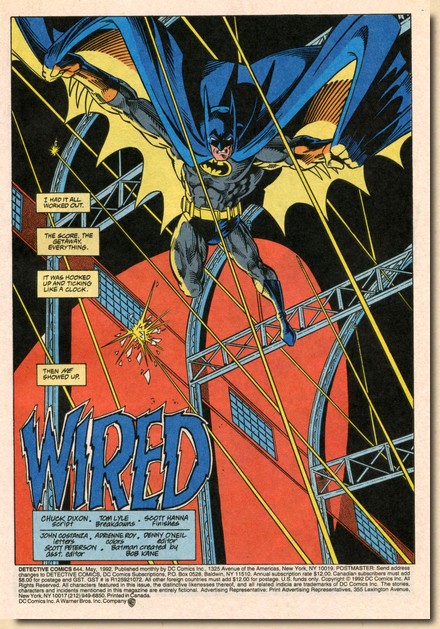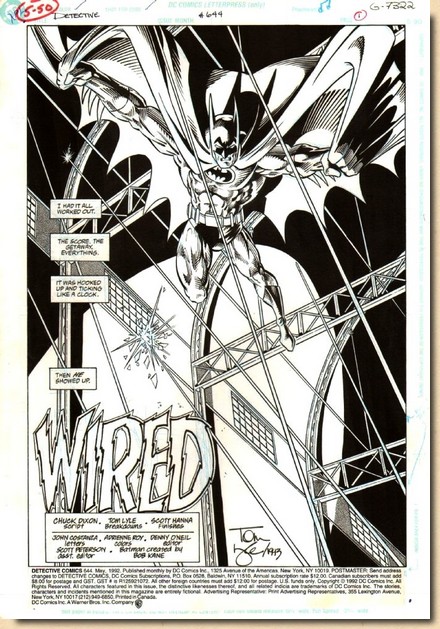| |
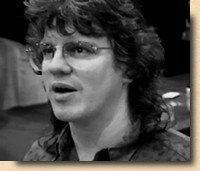
Tom Lyle in 1992
|
|
Tom
Lyle (1953-2019) started his career in
the mid 1980s penciling a number of
titles for Eclipse Comics. By late 1988
he was working for DC Comics, where
(together with writer Roger Stern and
inker Bob Smith) he introduced a new
Starman to the DC Universe. It was on
this title that Lyle was first paired up
with inker Scott Hanna, with whom he
would work together on several more
occasions over the years. After a number of
assignments for Marvel Comics, Lyle was
back at DC in 1990 where he worked on the
five issue Robin miniseries
featuring Tim Drake’s first solo
story. The miniseries reunited Lyle
with Chuck Dixon and Bob Smith, became a
huge hit, and gained Lyle a great deal of
attention and acclaim.
|
|
|
| |
In 1992, Tom Lyle teamed up
with Dixon and Hanna again for Detective Comics
#644 and the subsequent five issues (Lyle had previously
already pencilled the Darknight Detective in “Shadow
Box,” a three part follow-up to the Robin
miniseries, in Batman #467-469). From
there, Lyle moved over to Marvel Comics, immediately
establishing himself on the Spider-Man titles where, for Amazing
Spider-Man Annual #27, he once again worked with
Scott Hanna. Over time, however, things got difficult,
inspite of having worked for both DC and Marvel.
"Unfortunately in the
early 2000s Lyle began having trouble finding work in
comics. (...) Here was an artist who for over a
decade did good work on some of the most popular
characters at both DC and Marvel, and then suddenly
he finds himself not receiving any assignments.
(...) It’s a genuine shame that
freelancers who time and again were there for
publishers do not find that loyalty rewarded.
Fortunately for Lyle he was able to successfully
transition into another career. He began
teaching sequential illustration at the Savannah
College of Art and Design in 2005, a position he
remained at for the next decade and a half." (Herman,
2019)
Tragically,
Lyle suffered a brain aneurysm in September 2019 and dies
in November 2019, joining a sad long list of comic book
creators who passed on way too soon.
|
| |
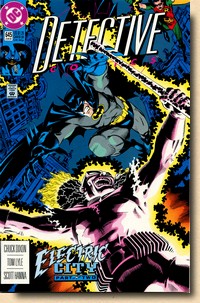
Detective Comics #645
(June 1992)
|
|
The
story is continued in Detective
Comics #645 (June 1992) and concluded in Detective
Comics #646 (July 1992).
FACTS & TRIVIA
The
Electrocutioner is a name used by three
individuals in the DC Universe: The first
appeared in Batman #331 (January 1981),
created by Marv Wolfman, Michael Fleisher and Irv
Novick. The second, an unidentified
self-appointed executioner of criminals who
slipped through the hands of the law, first
appeared in Detective Comics #622
(February 1991), created by Marv Wolfman and Jim
Aparo. Finally, the third Electrocutioner makes
his debut in this issue of Detective Comics.
Detective
Sarah Essen, whom Gordon is considering proposing
to in this issue, first appeared in Batman
#405 (March 1987). Created by Frank Miller and
David Mazzucchelli, she was part of the
"Batman: Year One" storyline as Lt
Gordon's partner.
|
|
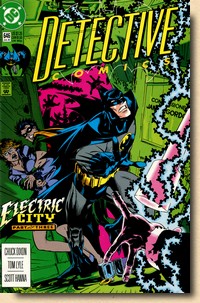
Detective Comics #646
(July 1992)
|
|
| |
| Revived both as a GCPD
investigator and love interest for Gordon under editor,
Sarah Essen returned in Batman #458 (January 1991).
Following a serious relationship, Gordon does actually
propose to her in Detective Comics #646, and the two get married in Legends
of the Dark Knight Annual #2 (1992). The storyline from Detective
Comics #644-646 has not been reprinted so far,
neither in a trade collection nor for a foreign language
market. The three covers, however, are featured in Legends
of the Dark Knight: Michael Golden, a reprint volume
published in 2019 and serving as an example of DC's
utterly strange reprint policy.
Detective
Comics #644 was also devoid of the usual letters
pages (still called "Detective Comments") and
therefore also Denny O'Neill's regular "From the
Den" column. It did however feature a whole slew of
advertising pages which provide something of a time
capsule view of what went on in 1992.
Video
gaming consoles were starting to become more of a
household item (Super Nintendo to name but one), but
"analogue adventures" were still popular (such
as Estes rockets), and even the old "flea
market" ads (which were all over the place in 1970s
comic books) were still around. You could even find
surprises, such as an AdCouncil's offer for free copy of
the US Constitution. Comic conventions were big and
frequent, and comic character trading cards were starting
to pop up. And finally, subscription advertisements were
still around.
|
| |
  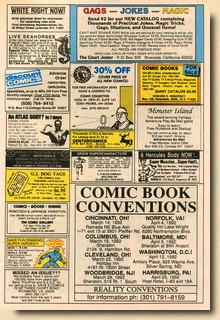 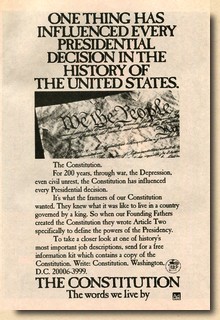
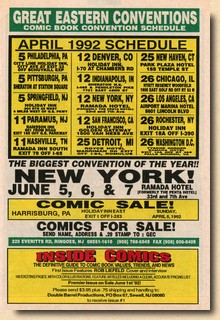 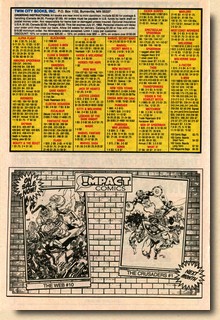 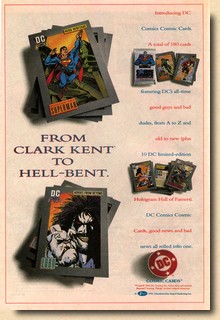 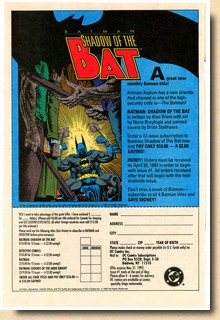
|
| |
| Of
somewhat anecdotal historical note is the half-page ad
for Impact Comics, an
imprint of DC Comics aimed at younger audience and
featuring revamped versions of superheroes licensed from
Archie Comics including the Fly, the Comet, the Shield,
the Jaguar, the Web, and the Black Hood (some of which
would make a short comeback in the early 2000's). The ad
reveals that the logo displayed the initial I as an
exclamation mark (i.e.!mpact), but the imprint was short
lived - started in 1991, it ended in 1993. |
| |
| |
| BIBLIOGRAPHY HERMAN Ben (2019)
"Tom Lyle: 1953 to 2019", In My Not So Humble
Opinion (29 November 2019)
|
| |
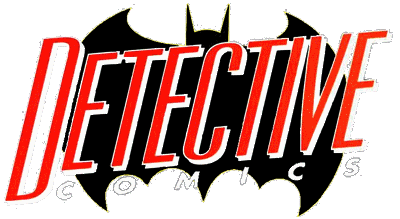
|
| |
BATMAN and all
related elements are the property of DC
Comics, Inc. TM and © DC Comics, Inc., a
subsidiary of Time Warner Inc.
The illustrations presented here are
copyright material. Their reproduction
for the review and research purposes of
this website is considered fair use
as set out by the Copyright Act of 1976,
17 U.S.C. par. 107.

(c) 2020
|
|
|
|

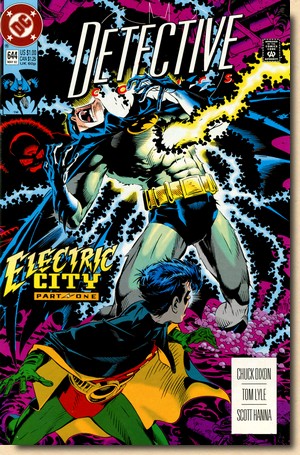
 SPOTLIGHT
ON
SPOTLIGHT
ON #644
#644